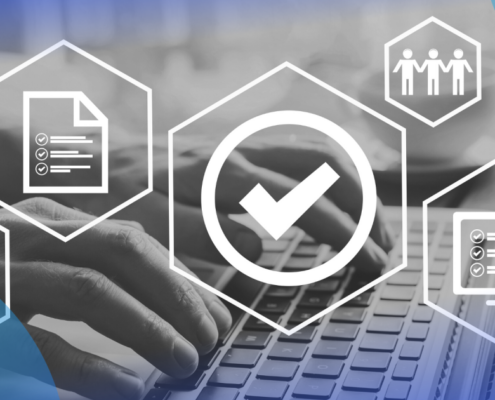
Historically, employee portal technology supported a basic employee use case in providing a platform for communication with employees using basic content management capability with some systems integration capability and a few other things. These legacy platforms were suitable for the time but did not anticipate the changing nature of the employee interaction model, the social trend dynamics, the proliferation and the corresponding to search for data and documents and were constructed with the notion of being built once with minimal further investment. These platforms did not have the capability to meet or keep up with future needs and were not designed for maximum employee digital experience.
To truly transform an employee portal into a digital experience platform, companies must first think about their foundation. Do they have the proper foundational software to deliver the desired employee experience? Do they have the proper foundational software to deliver the capabilities required to enhance employee capability and productivity? Do they have the proper foundational software to transform? The new software foundation must allow for:
1. The enablement of a best in class digital experience
2. Desktop, mobile, in-office and remote access capabilities
3. Personalization and social enablement
4. More complex system integration
5. Enhanced and dynamic search capabilities
6. Advanced analytics
7. Ability to leverage, enhance and protect a company’s employee investment
What is a digital experience?
Digital experiences allow companies to go beyond digitizing paper processes in order to create services that are possible only because of the internet and other modern technologies.
They have two key components: they use digital technologies and they provide some kind of interaction between a single user and an organization. Mobile apps, websites and smart devices all provide digital experiences to the customers, partners or employees that are using them to interact with companies.
A digital experience platform should go beyond being a band-aid solution for one problem. Instead it should seek to improve the experience for all users across the company.
Personalize and Socialization
Traditional portals have been modeled and built in one configuration, for one device-type. However, consumers are expecting, if not demanding, highly personalized experiences. Employees are consumers as well; consumers of other companies products and searching, and consumers their employer’s information. A study found that the preference for personalization is caused by two factors: a desire for control and navigating through an information overload. It may not be overly evident for a company that their employees are feeling a lack of control and overloaded with information until there is an examination is the processes and looking ways to personalize the experience for different users.
Furthermore, organizations should also enable employee socialization. In the age of social media, each platform allows users to communicate and engage with people in a variety of ways. Using a social media platform brings great advantage for an organization. Employees will feel they have more of a voice and seek to engage more than with regular e-mail. Social media promotes the desire to share and interact and will result in greater knowledge sharing and collaboration among employees. Opening the ways of communication between employees creates the freedom to use the platform best suited for specific needs.
System Integration
A company’s employees may be required to use many different tools to complete their tasks. This forces the employee to have to log into may different platform, with different experiences. These many softwares will have different update cycles, requiring the user to constantly change how their workflow is executed. Using one central platform can integrate all these tools, removing the multiple logins, and the workflow hiccups. A successful platform will knock down walls.
Information (search)
A primary objective of an employee portal, new or old, is the access to information. At the core of every business are the crown jewels of information that are critical for the company and are required by employees. If the access to this data is not available or is difficult to find, it reduces the value of the information and limits potential. On traditional platforms, finding information was lengthy and costly. In a modern portal, information should be easy to search for and find.
Information should not only be easily accessible on desktop but should be accessible for all users in various work environments. For example, a retail company may have a desktop with the portal in the back, but the employees who are only on mobile devices cannot access that information. Therefore, ensuring agility in how information is searched for will give access to everyone.
Another way of providing information to end users is through notifications. Traditional portals would require users to log in, to find the receive any communications or updates. This was not a very effective method as what could be important information could be missed or forgotten days later. With notification, this allows for employees to not have to take time out of their work and to get the information where they are (pop up, email, SMS, etc.) at the right time.
Analytics
Historically, if a company wanted to understand how an employee portal was being used or what parts were successful and which needed improvement, the stakeholders would either guess, run focus groups, or take a survey. However, these methods could provide flawed or inaccurate data. With a modern platform, analytics will allow you to test and learn. If a page is being used a lot, should it be more readily available or made a quick link. If a page is used less, why is that? Is the information not valuable?
The objective of an employee portal is to knock down walls. To truly achieve this result, the old foundation must be replaced with an agile platform that can grow and pivot with a company and its people. This new platform should go beyond being a band-aid solution for one problem. Instead should seek to improve the experience of the users across all engagements within a company. If done properly, the platform will amplify productivity inside of getting in the way. This is how companies can transform the digital experience with their portal.












